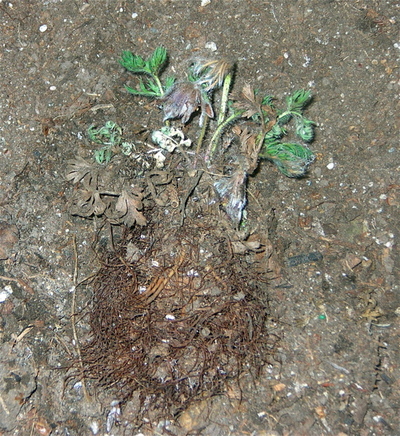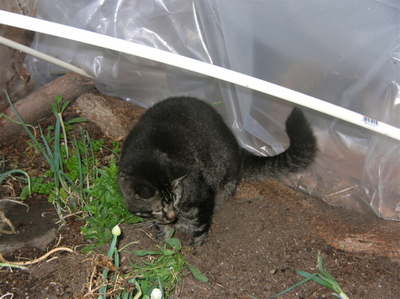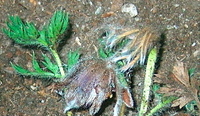You know how these things go: a comment on my cinch bug post led to a brief conversation with my husband, me maintaining that vacuuming up bugs off the lawn is pretty odd, and he claiming that we’d actually done something similar ourselves.
"What? Vacuum up bugs–oh my god."
"Remember the roaches?"
"Agh–yes. You’re right."
"And that’s what finally got rid of them."
This isn’t strictly speaking a gardening story, but it is an organic pest-control story, so I’m going to go ahead and tell it. It took place in our San Diego days, which is a good thing, because if that many roaches had inhabited a stove in New York, neither the stove nor I would have survived the experience. Nor the vacuum cleaner, come to think of it. (I’m not afraid of bugs, but New York cockroaches are a different order of being, truly the stuff of nightmares–mine, anyway, when I was a child. It’s probably because I was the one my two squeamish sisters assigned to kill them.)
There in San Diego we noticed roaches on our stove-top from time to time–slender, half-inch long items, not New York’s lumbering giants, which are often over an inch long and half an inch wide–(and here you see one of the many ways that growing up in New York City leaves one permanently twisted: everything, for the rest of one’s life, exists in comparison with the New York version and these paler imitations are, well, paler imitations. The rule applies to fireworks, cockroaches, you name it. And you wondered what the "twisted roots" in the blog tag meant. Now you know.)
So, back in San Diego, (remember San Diego? (remember Alice’s Restaurant?) This is a story about San Diego) I got up from bed one night and turned on the kitchen light to find the stove-top aswarm with roaches. We didn’t want to spray lethal chemicals all over the surface where we cooked dinner, so we took to lying in wait for them in the dark, then flicking on the light and leaping at the stove, bug-squashers at the ready. It worked great in that we got lots of bugs every time, but there were always more. It looked as though we could go on this way forever, and we weren’t that bored with our lives.
It was Steve who proposed taking the sides off the stove. When we did–pay dirt. Or pay bugs, except that I haven’t found anyone willing to pay. They swarmed over the insulation just inside the metal sides. We could actually see the little hollows where eggs were laid.
Clearly, a couple of sponges weren’t going to do the trick. And again, I suspect it was Steve who suggested the vacuum cleaner, because he really does have a "beginner’s mind" in the Zen sense–open to new ideas and therefore infinitely creative.
There was something perversely satisfying in vacuuming up those bugs by the dozen. We practically fought over the nozzle–"That one’s going to get away!" "Let me!" "No, let me!" And then there was the other side of the stove to do.
As Steve reminded me today, after that it was just mopping up. There were a few stray roaches over the next couple of days, but really, it was over. No sprays, no traps, no powders and, thank god, no nightmares.
We get locked into set ways of thinking about things (bugs=Raid), and this rigidity cramps our style. Sure, vacuuming the lawn may seem odd–but no more so than vacuuming the inside of the stove. If we’re going to give up pesticides, we’re going to have to be creative.





 Subscribe to RSS feed
Subscribe to RSS feed


